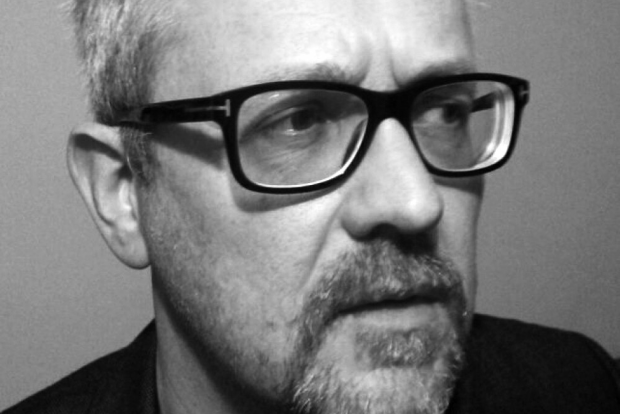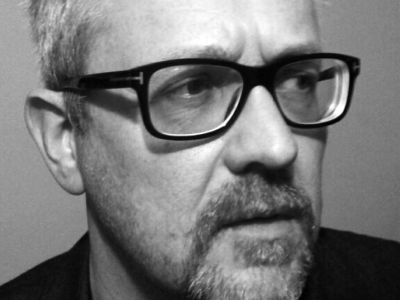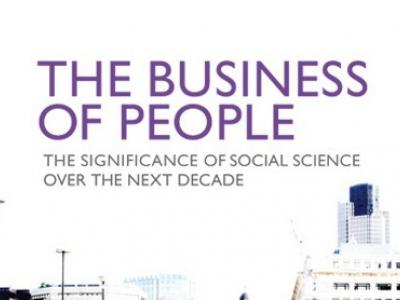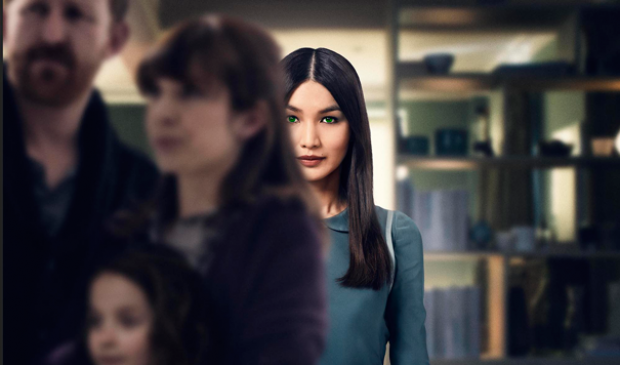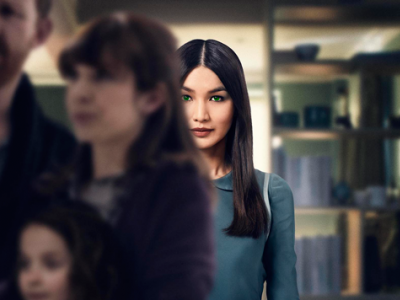“We chart the future, and then we invent it”
Little Atoms: Tell us the story Bell Labs? What is that? Where did it start, and where is it at currently?
Marcus Weldon: Bell Labs was started about 90 years ago by Western Electric/AT&T. It was the research arm of the telephone company back then, and its job, even in the early days, was to invent the future of telecom.
At the time, telecom was telephony and telegraph – in fact, the early documents say the mission is to chart the future of telephony and telegraph – but it’s remained the same in that regard in that the role was to think ahead, maybe 10 years ahead, imagine what the needs would be of humans in terms of communications, and think about what were the blocking issues, the seemingly insurmountable barriers to realising a different future, and invent solutions. That’s how we invented the laser, we invented radio communications, we invented operating systems like UNIX, programming languages like C, the transistor for all digital electronics – all of those were done because we were trying to invent new ways of communicating. And that’s what we do. Now communications, of course, doesn’t just mean voice. It means data across networks, it means text messages across networks, it means video, augmented reality, machines. All of those are forms of communication because if you think about it, if information is moving from one point to another, of any form, and from anywhere to anywhere that’s communication. And now that includes machines, which is the new wrinkle if you like.
I have two roles. I am Chief Technology Officer for Nokia, which means I sort of set the future direction of the company, and I am the President of Bell Labs, and that job is to invent that future direction. So I sort of chart the future, together with the leaders of the company, and then we invent it using Bell Labs research to help us get there in ways that were previously unimaginable
How do you go about trying to imagine the technology people will need?
I think the point of every great, or the origin of every great insight is producing something complicated for something simple. One of our spectrum graduates had the phrase “the job of invention is to embrace complexity to find simplicity”, and I absolutely believe that’s true.
There’s a cycle of complicated things becoming simple that is the origin of most great inventions. You could argue that simply in developing the smartphone – taking a keyboard that was complicated, a media player that was separate, web access that was primitive because it was through a WAP gateway – and putting it all in one device with a touch screen is an act of simplification, and I think many, many, many things are like that. That’s what we keep in mind.
Complicated things becoming simple is the origin of most great inventions
Then we think what’s the future of human need from a simplification point of view? Simplification doesn’t mean removal, but it normally means augmenting how people live but adding that augmentation in a way that simplifies their life, and we like to say that it takes time because we started thinking that the fundamental currency or asset that you can’t change is time.
We try to find what are the future problems where time is needed to be saved, and how does communication architecture and technology help that? And that’s what we focus on trying to solve.
How did Experiments in Art and Technology – EAT – emerge?
I’ll do EAT historically and EAT now because they’re similar, but I think we’ve firmed up the definition, or the reason why we’re doing EAT is clearer now. It started 50 years ago, roughly in 1966, so we just had the 50th anniversary. One of the reasons we restarted it was to recognise and celebrate the 50 years, but then we realised it was more important now than ever. It started 50 years ago. A group of Bell Labs engineers who were artistically inclined and spent a lot of time in New York with the contemporary arts scene decided to reach out to those artists and explore how digital technology could change the art world.
They decided that there was enough that we were inventing in Bell Labs that artists should be aware of that would change things. An example was they started using a simple laser trip wire
They thought those could be used, for example, to capture a choreographed dance piece, because there was no other way other than videotaping to capture a choreographed piece. There was no way to transcribe choreography. They actually thought why don’t we use those trip wires: whenever dancers cross the wires that’ll give an event, and you can at least transcribe the movement of the individuals into this very primitive dance beam-breaking analogy.
At the same time, they said can it even enhance the creation of art, so they had strange things like FM radio antennas or FM radio transmitters that whenever those artists crossed those wires it made a sound. It made a radio hiss if you want on a certain frequency band, but it started becoming not just a detection mechanism but also a creation mechanism. When they started working together, it started becoming a lot like that. Instead of just being what can you use technology for from a transcribing point of view, or capturing point of view, how can it actually enhance the creation of art.
And of course that went all over the place because you have people like Warhol, Rauschenberg, Whitman, and John Cage, were the artists involved. It got pretty crazy. There was a self-destructing machine that they built that actually, there was a one-off performance where the machine was triggered, and it gradually broke itself apart. You think, well, what was the point of that, but it was the idea of exploring the ephemerality of technology and machines. That’s what started, and it resulted in 9 Evenings, which was the nine performances they created that are quite famous. That’s the historical EAT.
And EAT now?
When the 50th anniversary came around, we looked at all that and said, well, you know now digital technology is extremely advanced, and art is really using digital techniques and methods to create itself, obviously digital video, essentially projection, there’s sophisticated projection landscapes that are possible now, automated lighting control, many other things are used by artists to create their art and as a fundamental part.
We thought it’s now time to revisit this, not to say what could we do to current art to make it even more enticing or enhance it, but actually how could we reimagine what art could be using digital techniques? We have this thesis that the goal is to allow people to communicate more completely and thereby have better experiences and save time. The better experiences are cognitive, aesthetic experiences, but to have time for those experiences we need to save time elsewhere.
We have lost the ability to communicate in a meaningful way
Within Bell Labs where we want to use networks to save time but also to create new experience. We started talking to artists about this idea, and it really resonated because they really thought that their art was cognitive and aesthetic, so we enhance the awareness of humankind, but they really loved the idea that the other goal of it was that people would be able to communicate better with each other. They didn’t think of that as saving time so much as just making better communities of people, but they loved the idea that what they were doing was so powerful that it could actually save people time by allowing them to appreciate each other’s existence more completely and be a cognitive aesthetic experience. So we play with that all the time with every artist, and an artist like Beatie Wolfe, for example, her idea with Raw Space was to try and return to some semblance of the physical experience of an album, even though we are living in a digital era of streaming and downloads, because she thought what was missing was that tangible piece of the tactile touching of the album, the whole experience of the liner notes and the artwork had all disappeared, and in doing so we’d lost a cognitive aesthetic element. That’s interesting to us because we want to communicate more complete cognitive aesthetic experiences over networks so that people feel more completely connected, and in doing so will enable them to save time because they won’t have to travel to the location where they would have that experience. They wouldn’t necessarily have to go to the record store to buy the vinyl, or they wouldn’t have to go to a friend to share the vinyl with them, they could do this more completely over a network so it saves time, but it also has this complete physical replication or reproduction as part of the aesthetic.
It’s interesting that now you have a big emphasis on saving time, when it didn’t feel that was an output dictated to the EAT group when it originally started. Do you think that’s just a reflection of contemporary society?
I just finished reading the book Sapiens by Yuval Harari. He argues that for 70,000 years we’ve been going in the wrong direction and making our lives more complicated by a series of decisions we’ve made, each of which seem like a good idea at the time but has actually resulted in undue complexity in civilisation that is rather unsatisfying to the average individual. We’ve built massive communities, but they’re relatively disconnected and not as fulfilled as they would be because essentially there’s so many tasks we have to perform, we don’t have time for contemplation, for aesthetics, etc.
Artists reveal a dimension that we otherwise as engineering, science types wouldn’t have perceived
If you think about it in that context, I think that awareness of the direness of the predicament we’re in has come about in the last few years, really, and in fact you could argue that the current political climate has made it all the more prevalent, poignant, prescient, whatever it was, that we are in a place where we have lost the ability to communicate in a meaningful way. We are increasingly divided across digital media that don’t resonate with us, and so you can have these bizarre monologues, echo chambers of communication, where people are only communicating with like-minded people and are actually completely out of touch with other points of view that would’ve existed in a community.
And when we think of the world of machines and robots and AI systems, that seems even more overwhelming because you can have many other things trying to tell you what to do, or even provide information to you. We seem to be on the edge of this cliff, and unless we sort things out and simplify things and harmonise things and find time, it’s not going to go well.
So it’s about creating new technology that allows use to use the technology we’re currently using in a more coherent way.
I would say so, yeah. I do agree that sometimes we create technology for the sake of it, but I’m a bit of a believer that we create it initially for a purpose, and that purpose became distorted, and so we used it for many things that we didn’t intend, and then it feels almost like the technology’s taking over. Then we fix that by sorting that all out again. It’s complexity back to simplicity. Marshall McLuhan said something like man invents technology, and then technology reinvents man, and I rather think that’s true. We’ve got these very sensitive brains that love to generate new. Sometimes we know why we’re generating the new because there’s a need, but very often we’re generating new just for the sake of it, and that creates complexity, and then we have to simplify that in order to create coherence again. I think we’re in one of those phases where we’re going to create coherence before we move forward, and it’s not about robots taking over, actually, I think it’s more about using automaton and robotic systems to help us simplify the number of tasks we have to do, and then we can focus on the more important cognitive aesthetic creative tasks.
One of the reasons why lots of people are interested in the EAT story is the amount of freedom that the participants had. Is that something that is at the heart of EAT now, or is it slightly different?
What I’d say is that EAT, unmanaged by Bell Labs, is just going on all the time and that is just an aesthetic that someone can say they are operating under the auspices of EAT, and although EAT exists as a society with a membership, anyone doing an art and tech project can say it’s in the spirit of or it’s an EAT-type project, and we’re not trying to manage all that. In fact, the more of that, the better. The part that we participate in, that we fund, the only thing we say is that we want to explore this saving time and allowing time for new cognitive aesthetic experiences by having those experiences transmitted digitally and then recreated physically. That’s our particular interest, so we always say to artists is there a part of your art that is about communicating it over a distance but then being able to make it very tangible and physical at the other end of that distance so that the human really resonates with it. We’ve got a thesis we’re exploring, but it’s not the only thing we would do. We would do any intersection of art and technology that fascinated us. What we’ve found interesting is that nearly every problem that people present to us or piece of art, since it is over a digital something, is digitally captured, is digitally transmitted, every artist is interested in that thesis because they do want to communicate their art broadly – digital networks are ways they do it, digital video – but they want it to resonate as if the viewer was right in front of a piece of art in a gallery or in a performance space. Nearly everyone says hey that’s fantastic, I hadn’t thought of that, but yes that’s exactly what I want work on, so let’s extend the project to look at that. We’ve had nearly everyone say “yeah let’s do that!”, and it hasn’t been very limiting, which is the point. We didn’t want it to be limiting. We did want a thesis, though, otherwise we could go after everything. That’s what we’ve done and Beatie was an obvious one. We’ve got three others that I was just reviewing yesterday in a collaboration in New Inc, which is an incubator attached to New Museum in New York. They’re all doing some exploration of the intersection of transmitting something digitally, creating things digitally, that allow you to have new experiences and save time. It’s all fitting in that oeuvre, if you like.
What projects do you have coming up?
One is we’re working on something with a beatboxer called Reeps One, who has been working on reinventing beatboxing. He approaches beatboxing as a language that he can use to communicate over distances to others and create non-verbal communication that has rhythm and melody through these sounds that are not words, and we’re very interested in the idea that if we could understand that, you could send that along as a haptic or non-verbal vocal track that might resonate with someone to create a feeling that would make them feel more present at the other end of a digital connection. That’s one we’re still working on with him, but it’s fascinating. He’s a really smart guy who understands that thesis very much as well. He was a child chess prodigy before becoming a beatboxer – an interesting mind coupled to this very unique technique. If you watch any of his YouTube videos, it’s incredible what he can produce.
We’re doing a bit of work with David Byrne on a project of his that’s coming out next year – the former lead singer of Talking Heads exploring how the mind perceives things. That’s a thing that we’re still fleshing that out. Then we have these three collaborations with artists in residence from New Museum, and one is on a dystopian world that is being created that people experience and understand a future, but the way it’ll be created is by using very sophisticated location-based technologies we have that allow the story to track the person as they move through a space, and then that one’s looking at possible negative outcomes if we don’t change how we behave.
Another is a tree that blossoms when people physically touch each other or digitally touch each other, so that how we connect with each other can change the physical world as a manifestation of connecting people, again, is detected digitally but it causes a physical thing to happen, and you’ll be able to do that remotely.
I think it’s a super fascinating area, and the more we do it, the more we actually discover new ideas in terms of technology capture, technological problems we need to solve, whether it’s tactile or haptic or how we encode that, or new languages that we might want to create that are multi-sensory languages. That’s always been our quest, but what we find is artists reveal a dimension that we otherwise as engineer-y, science-y types wouldn’t have perceived correctly. We would’ve tried to be perhaps a bit to methodical about it and a bit too rule-based or mathematical and formulaic. Artists open our minds to different ways of thinking about things, and we can map that back to technology needs and network needs. It’s working incredibly well.

